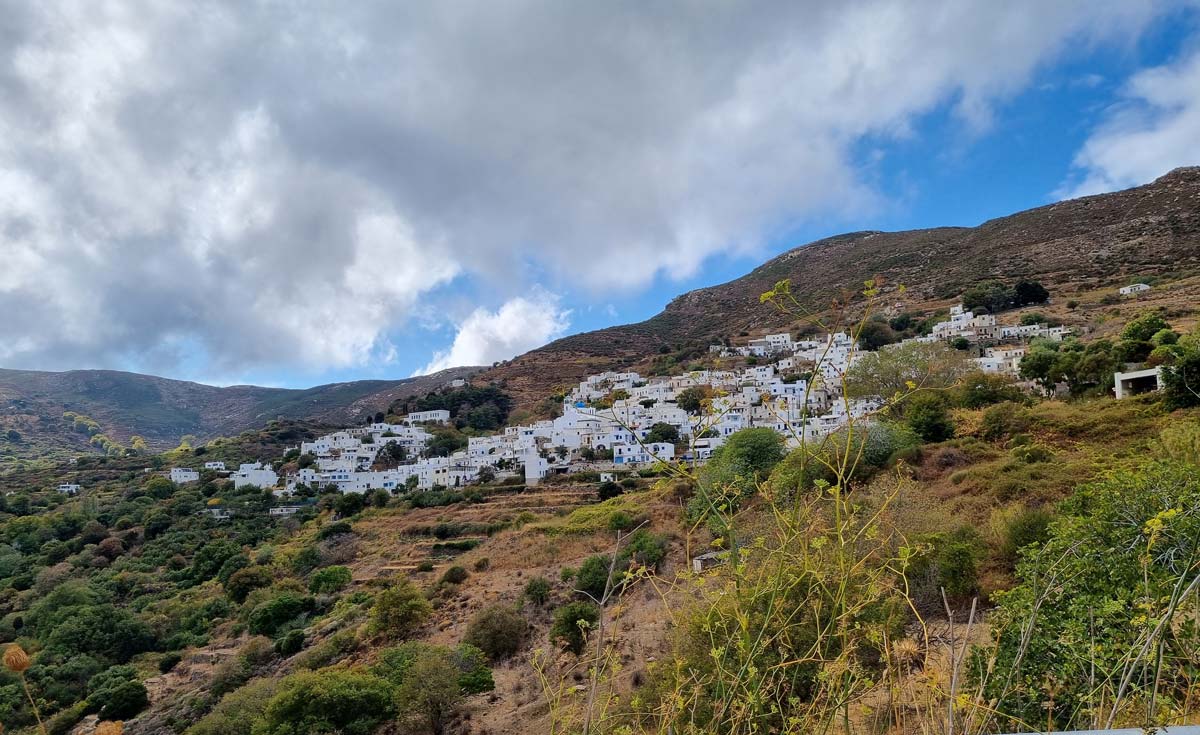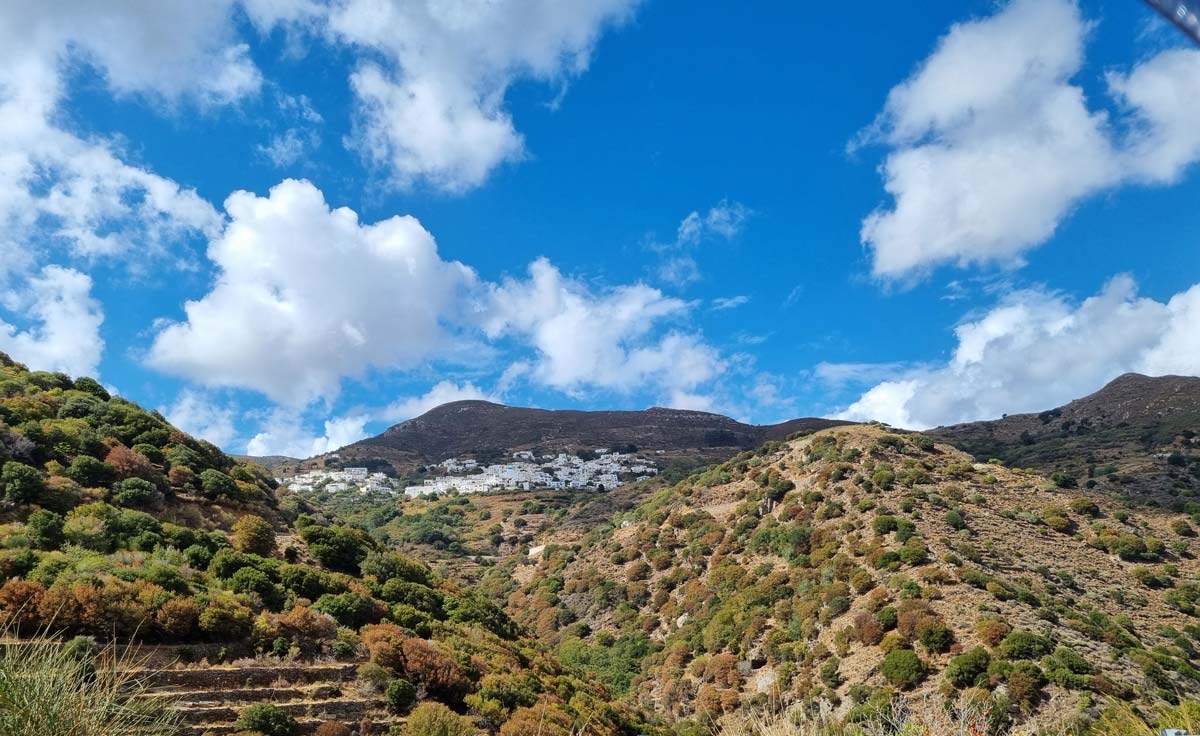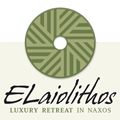Komiaki village is the most remote village in northeast side of Naxos, near Apollona Naxos. This village is blissfully unspoiled, among the best scenic traditional Naxos villages, and a hidden gem in the mountainous Naxos. The most afar away village from Naxos town, and the highest one, at an altitude of 700 meters, is a magnificent but underrated village of Naxos. It offers timeless appeal, the feel of authentic Naxos with its raw way of living, its picturesque landscape, and its rustic and charming vibrant village culture.
Komiaki village is situated at the fertile side of Koronos mountain. At the feet of the village 5 impetuous torrents, flow and delimit the village. “Tranos Riakas River” flows into the sea, at the graphic bay of Apollonas. Komiaki village is surrounded with rough landscape consists of ravines and dells that rotate, lush vegetation, huge platans, oak trees, walnut trees, laurels and orchards, rocks, mitata (small stone shepherd houses), threshing floors and benches, tanks and ponds, gardens, and scattered country whitewashed churches.

Komiaki village has an amazing music tradition. Its residents have influenced the musical events of Naxos, and have mould and evolved the traditional music of the island per te centuries. Komiaki is the birthplace of musical tradition of the “Vitzileadistiko” dance where only men dance, and the “Komiakitiki Vlaha” dance. These folklore dances have strong erotic components. Be prepared to fall in love when you see the locals dance with their flerting moves and lovely waist bends. Naxians say that the residents of Komiaki village have humorous and pleasant personalities, with facetious disposal, and they’re famous for their jokes and playful remarks, as the comedians.
Komiaki has about 600 permanent residents, mostly farmers, sheep breeders, and construction builders. The village has a rich Naxian tradition, and delicious local gastronomy with the famous traditional “batoudo” meat recipe (see here the recipe of “batoudo). It’s also known for its excellent wine varieties, and its local tasty cheeses xinomizithra, kefalotyri or xinotyro, made from the milk of free ranged ovines.
The surrounding area of the Komiaki village is ideal for hunting, and many people from all over the island come here for bird hunting. Visit in the interior of the village the watermill, the olive mill and the traditional wine press. Komiaki has several traditional kafeneia (coffee-shops), and tavernas serving local dishes and the highly rated Komiaki wine. The parish church of the Nativity of Virgin Mary celebrates on September 8th with a two-day music festivities. If you find yourself in Naxos during this time of the year, you don’t want to miss the night festivities here. Dancing of course would be a part of your experience!
If you’re looking to experience the scenery of a bygone time, Komiaki village is one of those places that one has to see and we highly recommend it. Get your camera ready! Reaching this Naxian beauty requires extra effort, yet the rewards are dazzling. Your eyes will thank you. A scenic narrow mountain road, an exhilarating zip line ride leading to the village, offers a splendid view of the amazingly vineyard fields and old bridges with numerous huge age-long plane and oak trees will connect you with nature. The region has dense vegetation and running waters. Here the feel of old traditions and local culture are apparent and thriving.

How the Komiaki Koronida village took its name
Mythology states that Koronida was the name of Asclepiad’s mother, who gave birth to him after her affair with god Apollo. It is said that Koronida was living at Koronos mountain, in the higher peak that Komiaki is situated now, above the Skeponi settlement, and she has been reported as one of the local nymphs of Naxos, Yades. Yades were the nymphs that raised Dionysus, and Zeus changed them into the homonym sky constellation. Zeus entrusted the raising of young Dionysus to 3 sisters: Koronida, Filia, and Ckeidi in order to avoid Hera’s anger after his mother, Semeli, died. Voutis kidnapped Koronida and then he married her, and god Dionysus punished her by imposing her into madness.
Arachaelogical findings worth seen in Komiaki village is the Mycenaean tomb
Worth visiting in Komiaki village is the dateless Vaulted Mycenaean Tomp in Axos valley, near Hostis tap. It’s weird that there is a Mycenaean tomb up in the higlands, so far away from the major Mycenean settlement that was situated in Naxos town, Chora.
It’s an important and rare monument in the Cyclades, being one of only three vaulted tombs that have been discovered in the region -the other two are those at Ayia Thekla on Tinos island, and at Aggelika on Mykonos island.
It comprises a circular burial chamber, built with boulders in scaled horizontal layers that create a large dome. The tomb has a 3.30 m diameter at the base and a height of 2.40 m. As indicated by an opening on its south side, the tomb has been looted in the past, and valuable items and information about its identity have been lost. It is, however, supposed that it was built circa 1300 BC and that it’s the tomb of a local ruler, whose name, though, cannot be identified because of the poor findings of the remains. It is said that his name might bare relation to the name of the site (Axos) where the tomb lies. In turn, the name Axos may derive from Naxos, which is the name of the 1st king of the island who came at the head of colonists from Asia Minor.
After all, Komiaki is a little pot of gold just waiting to be discovered….
Welcome to the good life!
Why Go to Komiaki village?
Read here more reasons why Komiaki Koronida village is 17 Km from ELaiolithos, a 30 minute drive, and 35 Km from Naxos town Chora, a 1.10 hours drive







